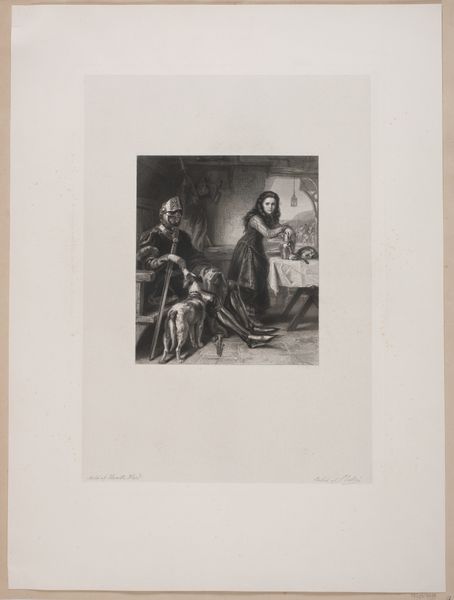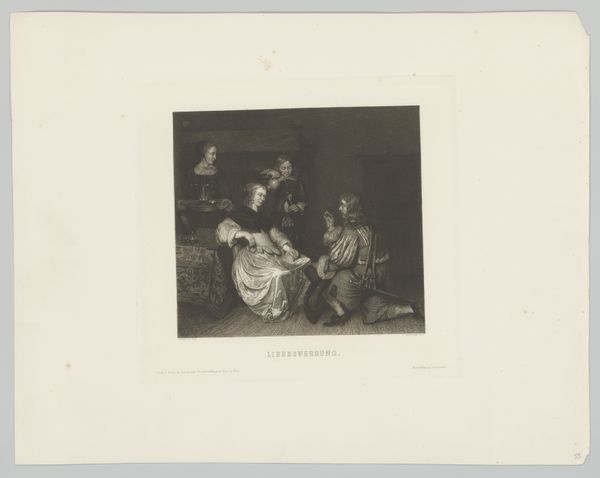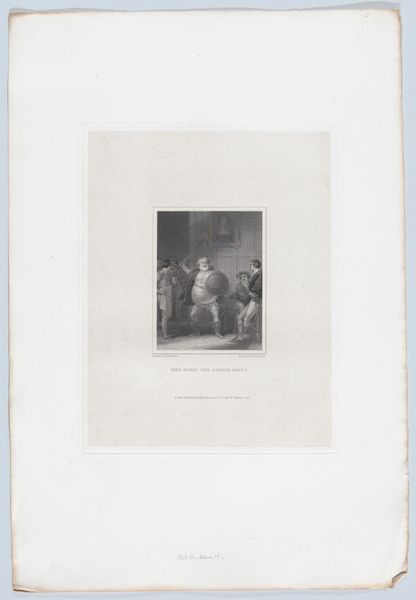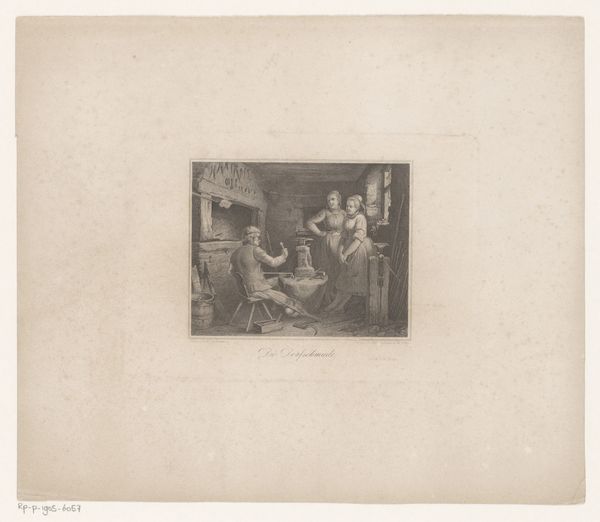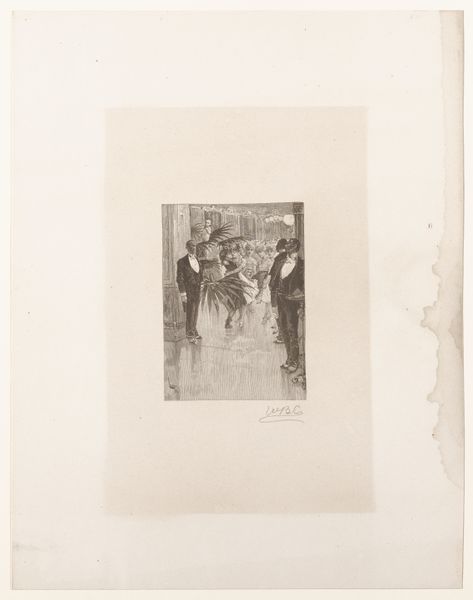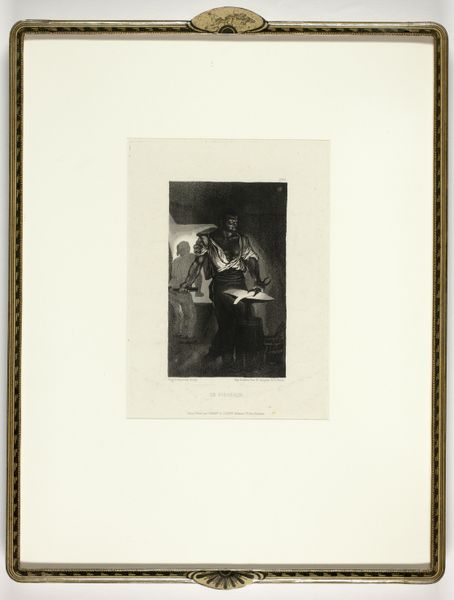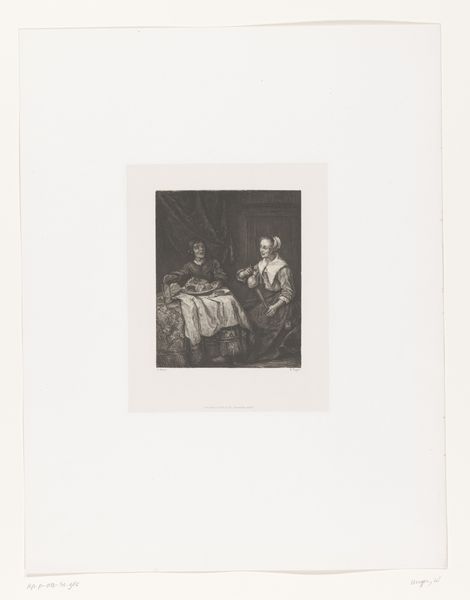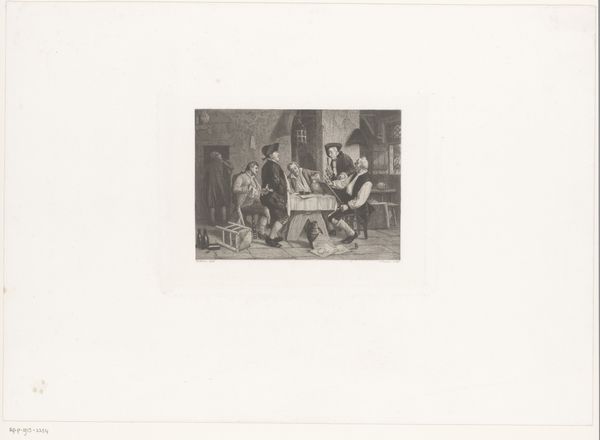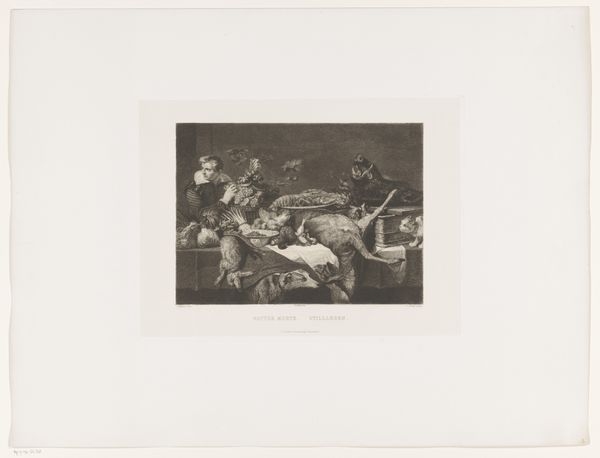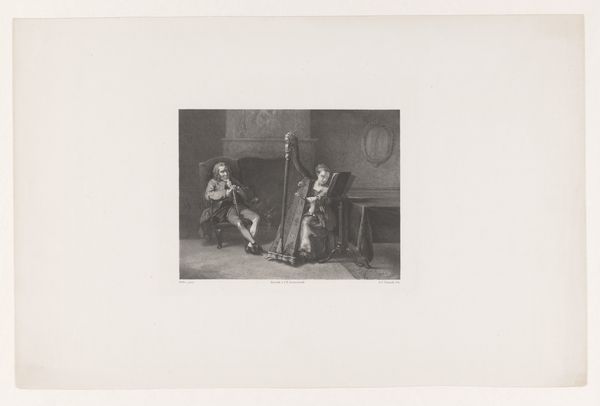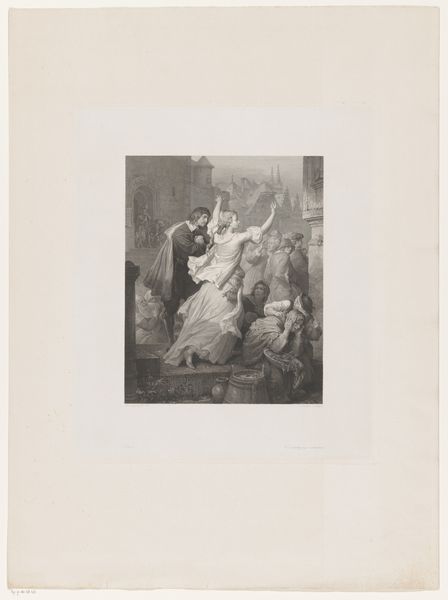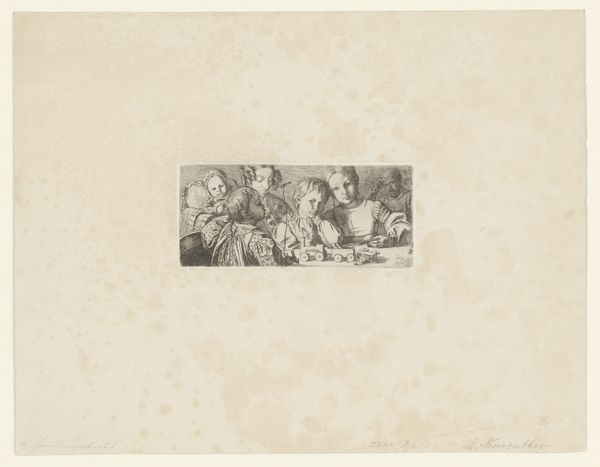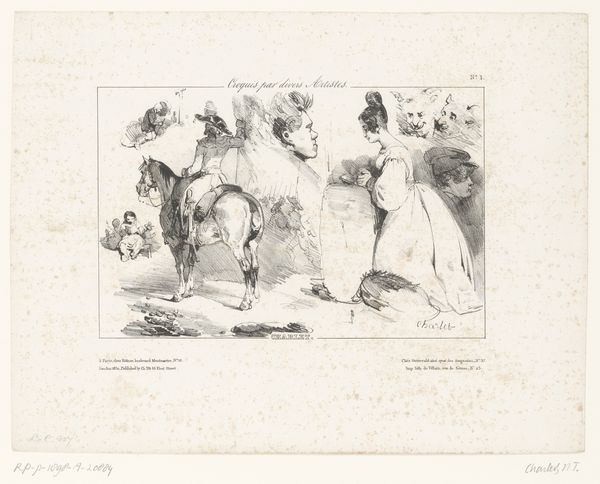
drawing, print, etching, intaglio, engraving
#
portrait
#
drawing
#
narrative-art
# print
#
etching
#
intaglio
#
genre-painting
#
musical-instrument
#
academic-art
#
engraving
Dimensions: Sheet: 17 5/8 × 12 5/16 in. (44.8 × 31.3 cm) Image: 4 3/4 × 6 7/8 in. (12 × 17.5 cm)
Copyright: Public Domain
Editor: This is "Palestrina and Her Daughters," an etching by Henri-Charles-Antoine Baron from 1853, currently at the Metropolitan Museum of Art. I am struck by the contrast; while it aims for an almost photographic realism, the cross-hatching used to build value is highly stylized. How do you interpret this work based on the compositional and textural qualities? Curator: The formal language is compelling. Note the intricate network of lines, how they coalesce to shape form and define space. The chiaroscuro effect, created purely through line density, emphasizes the play of light across the figures' garments and facial features. What purpose does it serve, thematically and formally? Editor: It guides the eye and emphasizes depth; the bright gowns stand out against a slightly darker background. Curator: Indeed. And consider how Baron manipulates perspective. The figures on the left appear compressed relative to those on the right. The architectural details framing the scene, the music stand and what may be a window...they pull focus while subtly flattening the pictorial space. The lines of the etching suggest an imitation of textures—the silkiness of dresses, the wooden instrument. Note the careful balancing of dark and light to produce contrast. It almost feels cinematic, doesn't it? Editor: Yes! The contrast provides dimension, as if he is manipulating light. Are you suggesting that the lines aren't simply descriptive but constructive? Curator: Precisely. The materiality of the etched line is crucial. Baron is not merely representing a scene but constructing an aesthetic experience. Each line functions as both signifier and constituent element of the overall visual structure. The narrative yields to the power of the forms and textures it holds. Editor: That’s really changed my view. I had initially seen it as an historical narrative. Now I can't unsee the impact of the visual presentation itself. Thank you!
Comments
No comments
Be the first to comment and join the conversation on the ultimate creative platform.
